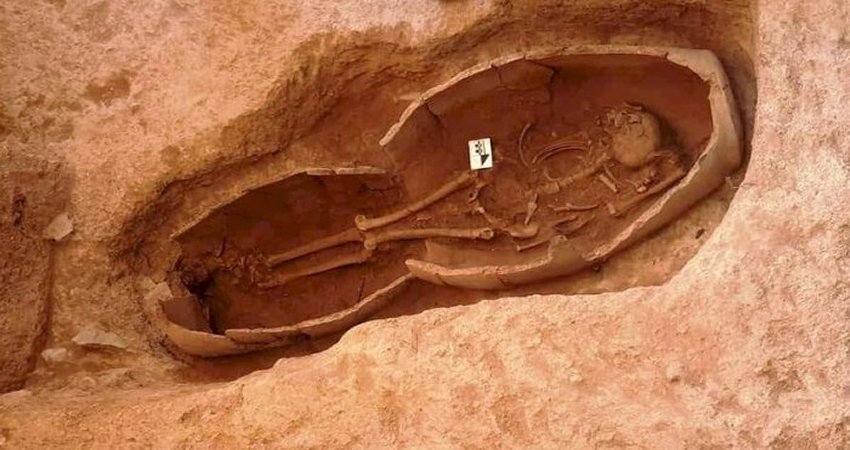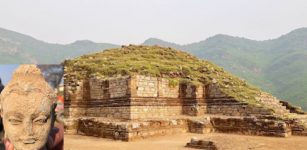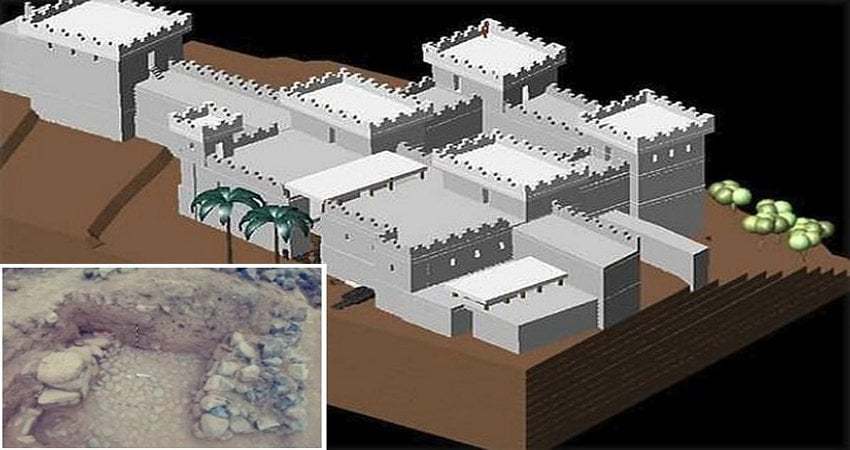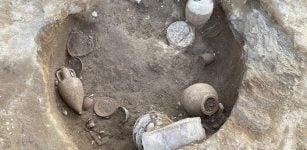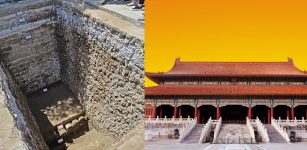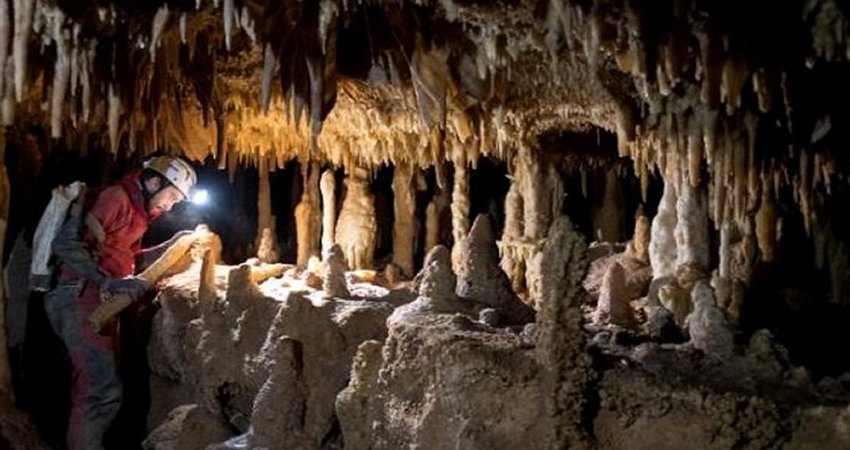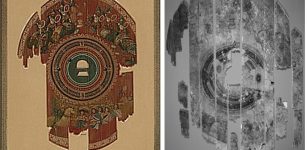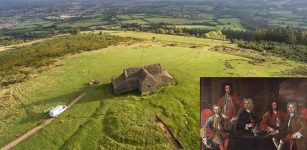Urartian Noble Woman Buried With Jewelry Found In 2,750-Year-Old Necropolis Of Çavuştepe Castle
Conny Waters – MessageToEagle.com – A grave belonging to a noble Urartian woman buried with her jewelry was found at the Çavuştepe Castle in the Gürpınar district of the eastern province of Van.
Since 2017, excavation works have continued at Çavuştepe Castle, an ancient fortified site in the Van province, which is also known as the Fortress of Hayk.
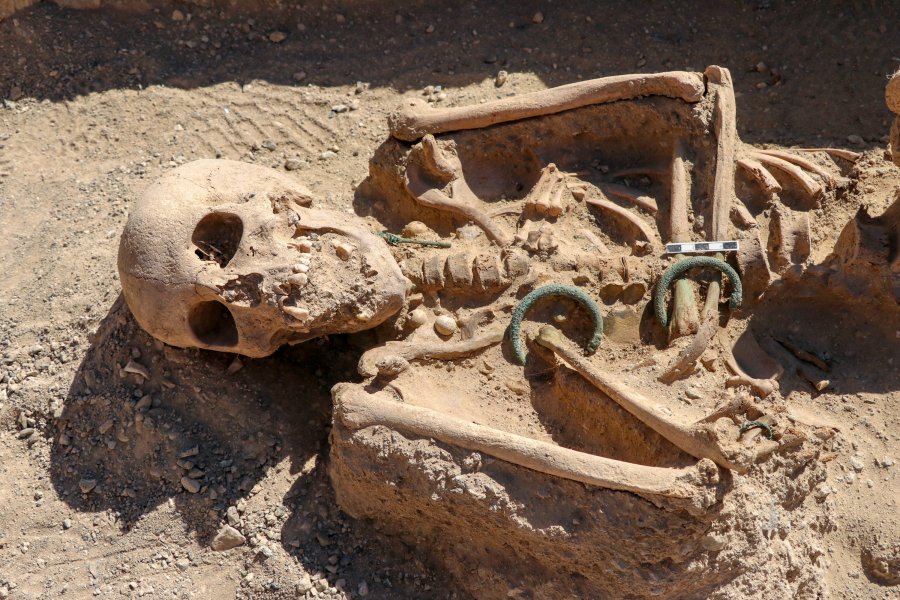
A close-up of the woman’s skeleton with jewelry at the necropolis of the Çavuştepe Castle, Van, eastern Turkey, Sept. 8, 2020. Image credit: AA
The structure consists of an Urartian Empire palace and the lower section of the fortress which includes a variety of buildings. The palace was built during the reign of King Sarduri II in 764-735 BC, the lower section was built around the 7th century and included a temple, workshops, storehouses, cisterns, and king’s tower. While the fortifications were destroyed in the 7th century probably by the Scythians., there are traces of later occupation during the medieval era. Urartu is a region, commonly known as the Kingdom of Van, centered around Lake Van in eastern Anatolia. The kingdom flourished in the mid-9th century BC, but later began to decline and was eventually conquered by the Iranian Medes in the early 6th century BC.
Over the course of the three-year project, Professor Rafet Çavuşoğlu, a professor of archaeology at the Van’s Yüzüncü Yıl University, and his team of archaeologists, anthropologists, art historians, and restoration work officials have conducted excavations at the ancient site of Çavuştepe Castle.
Last year, the team discovered the burial ground belonging to the 9th Century B.C. Urartian royal class in East Turkey’s Van province. The burial ground was discovered in the 2,750-year-old necropolis area, which was earlier unearthed by the archaeologists, anthropologists, art historians, and restoration work officials, working at the site of Çavuştepe Castle.
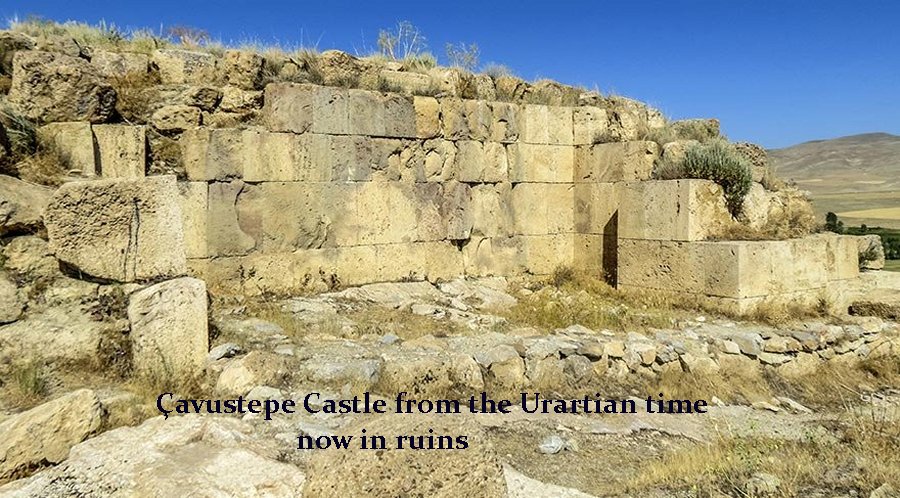
The team found a 2,777-year-old male and female skeletons, along with a silver necklace, 39 earrings, an amulet, a lion brooch, as well as a belt depicting mythological characters.
The excavated burial ground that covers a 50 square meter (538 square feet) area, is believed to be the resting place of Urartian aristocrats.
The recent excavation season also led by Professor Çavuşoğlu has contributed with more discoveries that include the skeletal remains of a woman buried with a full set of exquisite jewelry. The woman’s remains will be now examined in a lab environment to determine the cause of death and the exact age of the woman.
“This last grave we unearthed probably belonged to a woman aged 20-25. What matters here is that the woman was buried with all her jewelry,” said Çavuşoğlu, adding that the importance of jewelry in the burial traditions of the Urartians had been attested thanks to the latest discovery.
“There is almost a complete set of jewelry on her skeleton, which indicates that the adornment traditions of Urartian women were very highly considered. We have determined that the skeleton belonged to a noblewoman, given that there were bracelets on both her wrists, a bronze ring in her left hand, a pendulum earring on both her ears, a brooch on the lower part of her neck, and a necklace made of semi-precious stones on her neck. It is understood that she was buried with all the jewelry she used in daily life,” Çavuşoğlu explained.
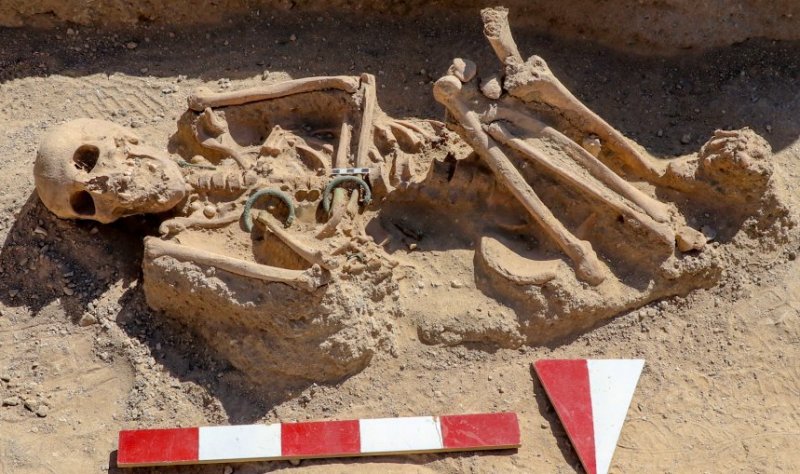
The skeleton of the Urartian woman is seen at the necropolis of the Çavuştepe Castle, Van, eastern Turkey, Sept. 8, 2020. Image credit: AA
The professor further noted that the value attached to women in Urartian society had also become more evident as part of their excavations, adding: “The most important point here is that the burials consisted of no ordinary people but rather the wives and relatives of the ruling class in the castle. One of the biggest features of this woman skeleton is her ring. It is perhaps the earliest archaeological find to testify to a prenuptial agreement.”
The research team had found very important information in the necropolis area over the course of the three-year project, Professor Rafet Çavuşoğlu, head of the archaeology department at Van’s Yüzüncü Yıl University who led the excavation works, said in an interview with Anadolu Agency (AA).
See also: More Archaeology News
For example, the researchers have discovered two types of burial traditions in the necropolis, where “the ruling class living at the castle had been buried,” and the advent of polytheistic religion.”
Another interesting discovery is an area covered with stones, bursting with urn vaults, measuring 10 by 5 meters (393 by 196 inches). As Professor Çavuşoğlu said, “some of the stones are placed in order, others are jumbled.”
Written by Conny Waters – MessageToEagle.com – AncientPages.com Staff Writer

